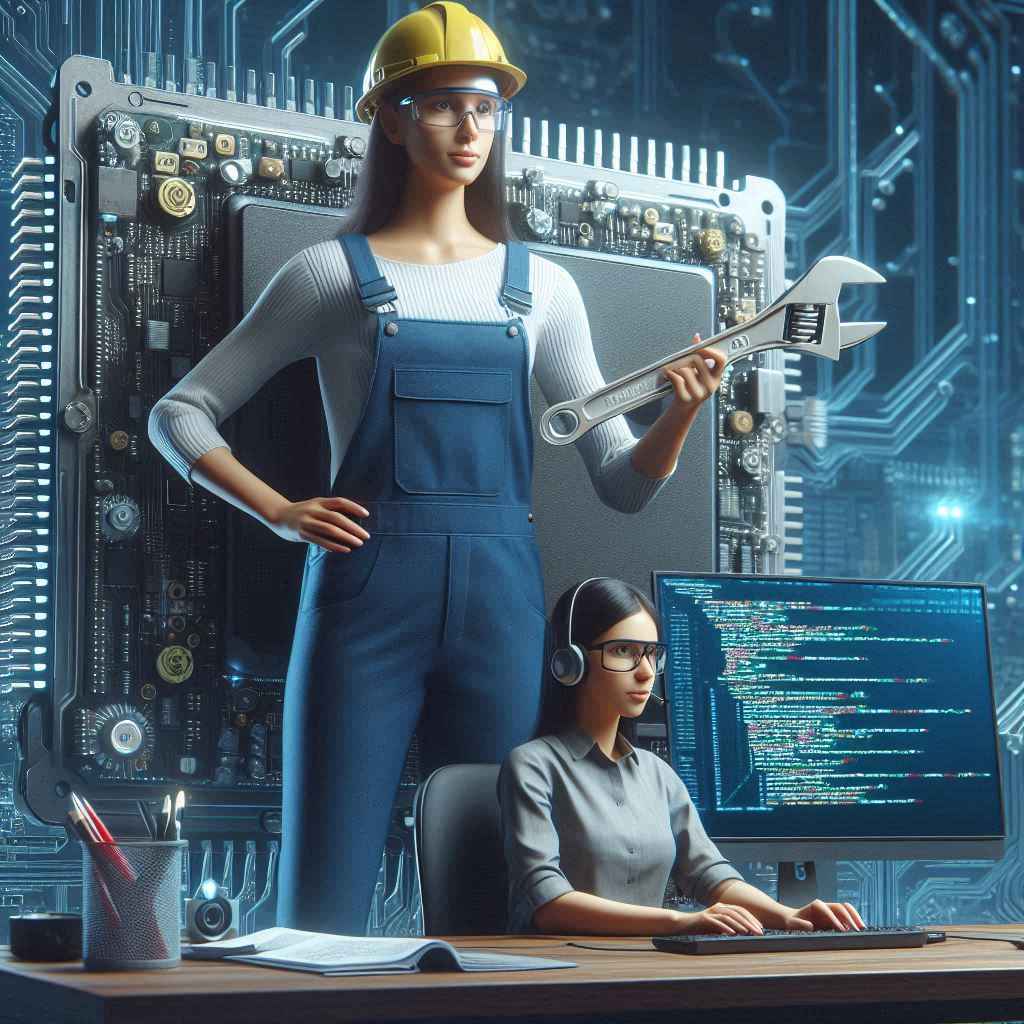Computer's Hardware & Software
What is a computer?
- A computer is like a magical machine that can do lots of different things for us. It's a bit like a super-smart and very fast friend that helps us with all sorts of tasks.
- A computer is an electronic device that store and process data. It performs tasks based on instructions.
- It consists of hardware components and software programs that work together to enable various functions and applications.
- A computer can do many things, like playing games, browsing the internet, writing documents, and even talking to other computers. It follows instructions we give it.
Hardware and software of a computer
Software is the set of instructions that tells the hardware what to do. It's the collection of tools and blueprints that make the toolbox come alive.
The Interdependence:
Hardware and software are like partners in a dance. The hardware provides the physical foundation, while the software gives it purpose and functionality. Neither can function without the other.
The most powerful hardware is useless without software to tell it what to do.
The most sophisticated software needs hardware to run its instructions.
Input Hardwares
Input devices receive data or instructions from the users or other devices. Computer understands these data or instructions and act accordingly. Here are some of the most common input devices:
Keyboard: This essential device is used for typing text and entering commands. It has keys for letters, numbers, symbols, and special functions.
Mouse: This handheld device controls a pointer on the screen. You move the mouse to point to things on the screen and click buttons or icons.
Microphone: This device allows you to speak into your computer and have your voice recognized or recorded. It’s useful for voice commands, dictation, and video conferencing.
Webcam: This camera mounted on the top of the monitor or built into the laptop is used for video conferencing, capturing images, or recording videos.
Gamepad: This handheld controller is specifically designed for playing video games. It typically has a directional pad, buttons, and joysticks for controlling in-game movement and actions.
Output Devices
Output devices are how the computer shows you the results to you. Here are some of the most common output devices.
Monitor: This is the screen you look at, where you see all the games, websites, and programs you use.
Printer: This machine lets you take what's on your computer screen and turn it into a physical copy, like a printed document or photo.
Speakers: These are the little boxes (or headphones) that make sounds! They play music, movie soundtracks, and the noises from your video games.
Projector: This device shines an image from your computer onto a bigger surface, like a wall or screen. It's great for presentations or movie nights!
Processing Devices
They're the hardware components that take all the information you feed the computer through input devices and crunch the numbers, manipulate data, and follow instructions to make things happen.
Central Processing Unit (CPU): Often called the "brain" of the computer, the CPU is the boss that carries out instructions and manages all the other parts. It's responsible for processing data, calculations, and running programs. The faster the CPU, the quicker your computer can handle complex tasks.
Graphics Processing Unit (GPU): This specialized processor handles all the visual tasks on your computer. It's particularly important for activities that require high-quality graphics like gaming, video editing, and design software.
These two are the main processing devices, but there are others that play supporting roles:
Memory (RAM): Think of RAM as the computer's short-term memory. It holds the information the CPU is currently working on and allows for quick access. The more RAM you have, the more things your computer can juggle at once.
Tasks
1_ Create a presentation that showcases the important hardware components of a computer.
2_ Check the available space in the memory.
3_ Check the type of RAM and processor.
4_ Check the O.S. in your system.

